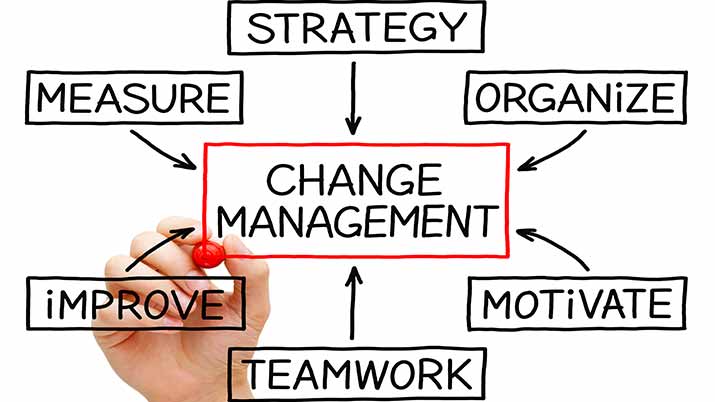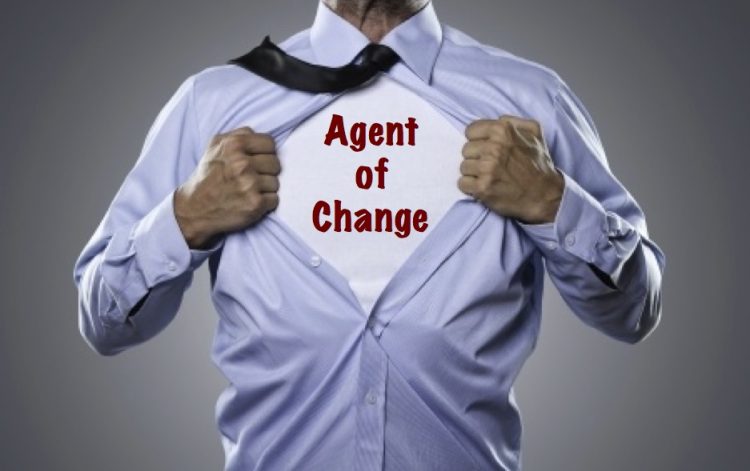In any organization, big or small, one of the most challenging and critical issues that both business owners and managers face is making their corporate talents embrace change including leading and managing them thru it.
If not executed carefully and thoroughly, the change has the tendency to defeat its positive purpose and ends up being one of the worst headaches of the organization.
In our article for today, we discuss to you MSS Business Solutions’ five-stage model to Change Management and how each process is done correctly and meticulously.
We’ve come up with a mnemonic to help you remember the entire methodology as you manage changes that happen in your own company or group.
A – Advise all the influencers of the company
Before calling on all the influencers of the organization and sitting down with them to discuss the change that is being introduced, the one taking the lead should first determine who these influencers are.
‘Influencers’ don’t necessarily have to be the President, Vice Presidents, or Senior Directors of the company. These change champions, as how they are often called, may or may not hold leadership positions. They can also be individual contributors (IC) and/or non-supervisors/non-managers who are basically ‘influential’ in their respective roles and departments.
The major qualifications of influencers are the following:
- They are the lead in the division or department that will be the busiest and the most active function during the change process.
- They are the most influential not just because they hold top or senior leadership positions but also because they are the ‘voices’ that people will respect, listen to and act upon.
- The nature of their duties and responsibilities in the company is both strategic, tactical, and operational in the sense that they are really the point people in internal and external communications and they are the closest to the people that the change process and its elements should be communicated to.
Once these most corresponding influencers are gathered, the lead’s next thing-to-do is to explain to them what the change is, how it came to be, why it has to take effect in the company, and what they are supposed to do to help one another convince their employees to see the good in it.
It is very important that the key people in the organization are not just aware of the change and the fact that they are expected to promote it and lead its implementation. They are not going to be able to convince their own employees to believe in it and champion it among their own team or cliques if they are not ‘into it’ themselves.
D – Devise the Communication Plan
One of the serious mistakes of company managers who direct people through change is they do not go through the right ‘one step at a time’ process in communicating the change initiative.
They think that employees ‘below them’, if I may, have no choice anyways so there is no use in communicating the change to begin with.
I’ll tell you what. The moment that business owners, investors, and top honchos think this way is the beginning of the company’s downfall.
The change agents identified in the previous stage MUST tackle how:
- They will communicate everything
- What complete aspects they ought to communicate
- Who is able to communicate effectively
- The period within which they may only afford to carry out the communication;
- What contingencies they will resort to when both expected and unexpected barriers get in the way during the course of the communication.
Some of the best practices in communicating changes are:
- Focus group discussions
- One-to-One Interviews with team/group/department supervisors and managers who will then cascade all the information to their direct reports
- Corporate town hall meeting/s where employees can already voice out their opinions and raise recommendations with a structured flow and moderation from the organizers
- Employee reorientation and even corporate-training format sessions
- All the rest of the traditional and non-traditional internal communication means like bulletin boards, emails, memoranda, and other correspondences
The goal of every change management initiative is to ensure that all stakeholders in the organization are on the same page in terms of sharing the vision, mission, and values of the company and the benefits and advantages of making permanent and effective the change that is being introduced.
To learn about time-proven best strategies in bettering team communication, read our other article about it.
A – Align all the Ms of Leadership and Management
Most people supervisors and managers are already familiar with the Ms of Management namely:
- Management
- Men/Manpower
- Meaning/Motivation/Morale
- Marketing
- Materials
- Machines/Machinery
- Methods
- Minutes/Moments
- Money
- Measurement
Aligning all these Ms simply means that for the change project to start well and end just as well, the change being introduced must penetrate all aspects of the business, the people that run and operate it, and the tangible and non-tangible components that are involved during the implementation.
If all of these essentials are coordinated, change itself is not supposed to defeat the very purpose it was envisioned to serve and it shall work to the advantage of all shareholders and stakeholders whose only agenda is to see the company grow bigger and earn better.
P – Promote the change to all stakeholders positively and get their buy-in and support
There is a saying that goes, ‘The best way to lead and manage people is when they can already lead or manage themselves’. One of the ways by which our corporate talents achieve self-leadership and self-management during a change effort is when they know the WIIFM of the change, why it was thought of in the first place, and how it will positively impact them and other factors of the job in the long run.
They should only see the positives. In fact, even if there are inevitable negatives along the way, they should recognize and appreciate the positives more than the negative ones. It all depends, therefore, on the efficacy of the communication plan and the deservedness and capabilities of the ‘communicators’.
The company should not assign or accept volunteers who are unable to positivize, so to speak, communicating everything about the change and rallying the corporate talents to the company’s side in order to turn them into change agents themselves. It is a mess to try to gain the support of employees who had already been turned into antagonists at the outset of the change management project because the advocates of change failed to make them know, understand, appreciate, and apply the benefits of it all and make them feel that they are valued assets of the organization whose buy-ins are as important as the must application of change itself.
These so-called advocates or change agents, therefore, should be equipped in or if not, should be trained on Assertiveness (What to say positively, how to say it, and how to look properly when saying it) and of course in coaching and counseling and motivation, inspiration, engagement, and empowerment techniques. Otherwise, they are only going to cause more trouble than any help at all. They will never take ownership of the change for which their support is needed.
Last but not least, it is very significant during the change’s promotional campaign that the stakeholders’ inputs and suggestions are not only listened to but processed accordingly as well. This means that when they notice areas for improvement in the change initiative and its implementation, such feedback must be treated as intellectual pieces of advice that can help enhance, if not perfect, enabling all activities and accelerating change in the organization. There are things that the management cannot see that the corporate talents can look into from their perspectives and vice versa. Instituting change is all about acknowledging, respecting, and leveraging the Voice of the Employees.
T – Transition seamlessly to the change
When the prior stages had been done properly and thoroughly, it is no surprise that, at this point of the A.D.A.P.T. Change Management Model, everything automatically falls in its proper place and that the change itself seamlessly flows through.
However, just like in managing any project, it is very critical that all members of the change initiative remain on their toes all the time in monitoring and evaluating the effectiveness of all procedures and the reception, both responses and actions, of all stakeholders engaged.
Also, while it is really needed to create a sense of urgency in the processes and among the influencers and agents, nothing should be forced into people and through each stage. Different people move at different paces during the whole change management in terms of their acceptance, consistent action, and progress. It is highly-recommended that each person in the organization is guided through this crucial phase in the company’s existence.
Lastly, Reinforcement is the key to everything. To keep the change permanently working and helpful, the knowledge, understanding, appreciation, application, and succession of the change itself must be consistently strengthened and followed through as time goes by even if people come and go.
MSS Business Solutions guarantees that when this methodology is utilized in your organization, change management and managing our corporate talents through it should never be a complicated and daunting task again.
If you would like our company to convert this article into a one-day or a customized in-house corporate training or public seminar for your organization, just give us call at (02) 919-2734 and talk to our Chief EnterTrainment Officer and The Corporate EnterTrainer and Soft Skills Guru of the Philippines himself, Mr. Myron Sta. Ana himself or email us at info@mssbizsolutions.com.
To view our training outline, just click the link below:








Add Comment